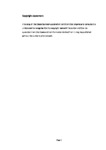Improving visual field tests for populations with advanced glaucoma and visual field loss in the periphery
| dc.contributor.supervisor | Eleni, Papadatou | |
| dc.contributor.author | Bain, Catherine | |
| dc.contributor.other | Faculty of Health | en_US |
| dc.date.accessioned | 2021-09-30T14:20:18Z | |
| dc.date.available | 2021-09-30T14:20:18Z | |
| dc.date.issued | 2021 | |
| dc.identifier | 10568314 | en_US |
| dc.identifier.uri | http://hdl.handle.net/10026.1/17976 | |
| dc.description.abstract |
The visual field can extend up to 100° in the temporal visual region; however, in patients with glaucoma and other diseases that affect peripheral vision, only the central 30° of the visual field is monitored regularly in clinical practice using static perimetry. These static tests are rapid and robust against human errors due to their testing strategies. However, approximately 80% of the rest of the visual field is less regularly examined due to the length of time it takes to measure, using both static and kinetic stimuli. Currently, there is not an established automated kinetic test to measure the visual field within the same duration, and precision as a central static perimetry test. The peripheral visual field is important for aspects such as attention, balance, and mobility, thus examination of this visual region may provide important information. This Thesis focuses on the development and clinical application of automated kinetic peripheral visual field tests, designed to rapidly measure the peripheral visual field. In the first study, the outer limits of the far peripheral visual field were examined using kinetic stimuli by adapting a commercial Octopus 900 perimeter (Haag-Streit, Koniz, Switzerland) with an extended fixation device. The results confirmed research from a century ago and the distribution of responses provided the framework to develop kinetic perimetry strategies. With this perimeter adaptation, we investigated the effect of cataract surgery on the extent of the peripheral visual field and if negative dysphotopsia can be detected. This was undertaken in 30 post-cataract surgery patients, using a stimulus that moved both inwards towards the fixation point and outwards from the fixation point. The results suggested implantation of intraocular lenses reduces the extent of the peripheral visual field. Negative dysphotopsia was detected in a patient, with shrinkage of the capsular bag being identified as the possible cause. Simulations of responses to kinetic stimuli formed a kinetic test that was used to measure the outer visual boundary in participants with advanced glaucoma. Simulation results showed good precision, and a test duration similar to a static central test. Clinical application of this kinetic strategy test in a group of 12 participants with advanced glaucoma showed faster results than simulation estimates, and isopter estimates were precise to within ±4°. I investigated the effect of vision loss from glaucoma on postural sway stability. Participant postural stability was measured in 11 participants with glaucoma and 12 aged matched controls, using accelerometers (Xsens MTw, Awinda, Holland). Participants viewed different visual scenes, to compare the role of central and peripheral visual fields on stability. The impact of proprioceptive feedback on stability and the contribution of vision was measured by using different standing surfaces. The results of this study confirmed a decrease of postural stability with vision loss, an increased reliance on proprioceptive feedback in glaucoma participants, and lack of input of the peripheral visual field outside of 60° on standing balance. | en_US |
| dc.language.iso | en | |
| dc.publisher | University of Plymouth | |
| dc.subject | Perimetry | |
| dc.subject | Kinetic | |
| dc.subject | Peripheral Visual Field | |
| dc.subject | Negative Dysphotopsia | |
| dc.subject | Postural Sway | |
| dc.subject | Advance Glaucoma | en_US |
| dc.subject.classification | PhD | en_US |
| dc.title | Improving visual field tests for populations with advanced glaucoma and visual field loss in the periphery | en_US |
| dc.type | Thesis | |
| plymouth.version | publishable | en_US |
| dc.identifier.doi | http://dx.doi.org/10.24382/1082 | |
| dc.rights.embargoperiod | No embargo | en_US |
| dc.type.qualification | Doctorate | en_US |
| rioxxterms.funder | Fight for Sight | en_US |
| rioxxterms.identifier.project | Improving visual field tests for moderate and advanced glaucoma | en_US |
| rioxxterms.version | NA |
Files in this item
This item appears in the following Collection(s)
-
01 Research Theses Main Collection
Research Theses Main


